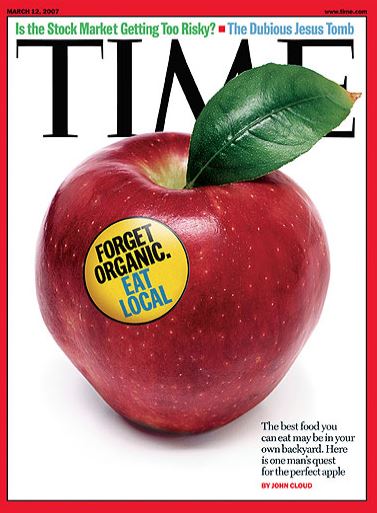That modern agriculture is incredibly productive - much more than the past - is undeniable. These USDA data, for example, suggest we produce about 170% more agricultural output now than in the late 1940s. I have argued that these these increases in agricultural productivity are signals of improved sustainability. Some people believe the the productivity improvements have been accompanied with offsetting externalities or degredations in animal welfare. A different kind of critique is that modern crops - despite being more productive - aren’t as high “quality.” For example, this piece in Politico by Helena Bottemiller Evich, titled “The great nutrient collapse” discuses evidence that vitamin content of crops has fallen as yields have increased, and there is the often-heard complaint that tomatoes don’t taste as good as they once did.
There is some biological basis for these latter concerns. If a crop breeder selects plants for higher yields, they are selecting plants that are spending their energy and nutrients into producing bigger seeds and fruits, which is energy that could have gone (in lower yielding plants) to growing leaves or roots or other compounds that affect taste and vitamin content.
I had these thoughts in the back in my mind when I came across the Midwest Vegetable Trial Report put out by researchers at Purdue and other Midwestern universities. The report compares different vegetable varieties in terms of yield and other output characteristics. I noticed for a couple vegetables - green beans and sweet corn - there were also measures of taste for each variety. Granted, these were not full-on scientific sensory evaluations and they involved small numbers of tasters, but still I thought it would be useful to test the conjecture that higher yielding varieties taste worst.
Some researchers from University of Kentucky put together the green bean report. They compared the performance of 19 different varieties of green beans. The most productive variety (named “Furano”) yielded 785 bushels over six harvests, whereas the lowest yielding variety “Slenderette” only produced 233 bu/acre in six harvests. As the image below reveals, however, there was only a weak correlation between taste and yield. The correlation was negative (-0.26), but not particularly large. About 6.6% of the variation in yield is explained by taste. The best tasting variety “Opportune“ had a taste score of 4.1 (on a 1=poor to 5=excellent scale) and a yield of 557; the worst tasting variety “Bronco” had an average taste score of 2.3 and a yield of 543. So, the best tasting bean had better yield than the worst tasting bean. Overall, the results below provide some weak support for a yield, taste trade-off.
The report also provided production and taste data on supersweet corn (this part was authored by Purdue researchers Elizabeth Maynard and Erin Bluhm). They compared 16 different types of bicolored supersweet corn (they also evaluated two varieties of white and two varieties of yellow, which I’m ignoring here). They had tasters rate “flavor” on a 1 to 5 scale. As the figure below shows, there is actually a positive correlation between flavor and yield, as measured by ton/acre. The correlation is 0.15, but the relationship is weak. The authors also report yield in a slightly different way, ears/acre, and by this measure the correlation is slightly negative (-0.09).
These results don’t necessarily negate the idea that the taste of vegetables has declined over time as higher yielding varieties have been adopted, but they do suggest that in 2017, among the particular varieties tested and among the few tasters asked, there is only a very weak correlation between taste and yield for green beans and supersweet corn.





